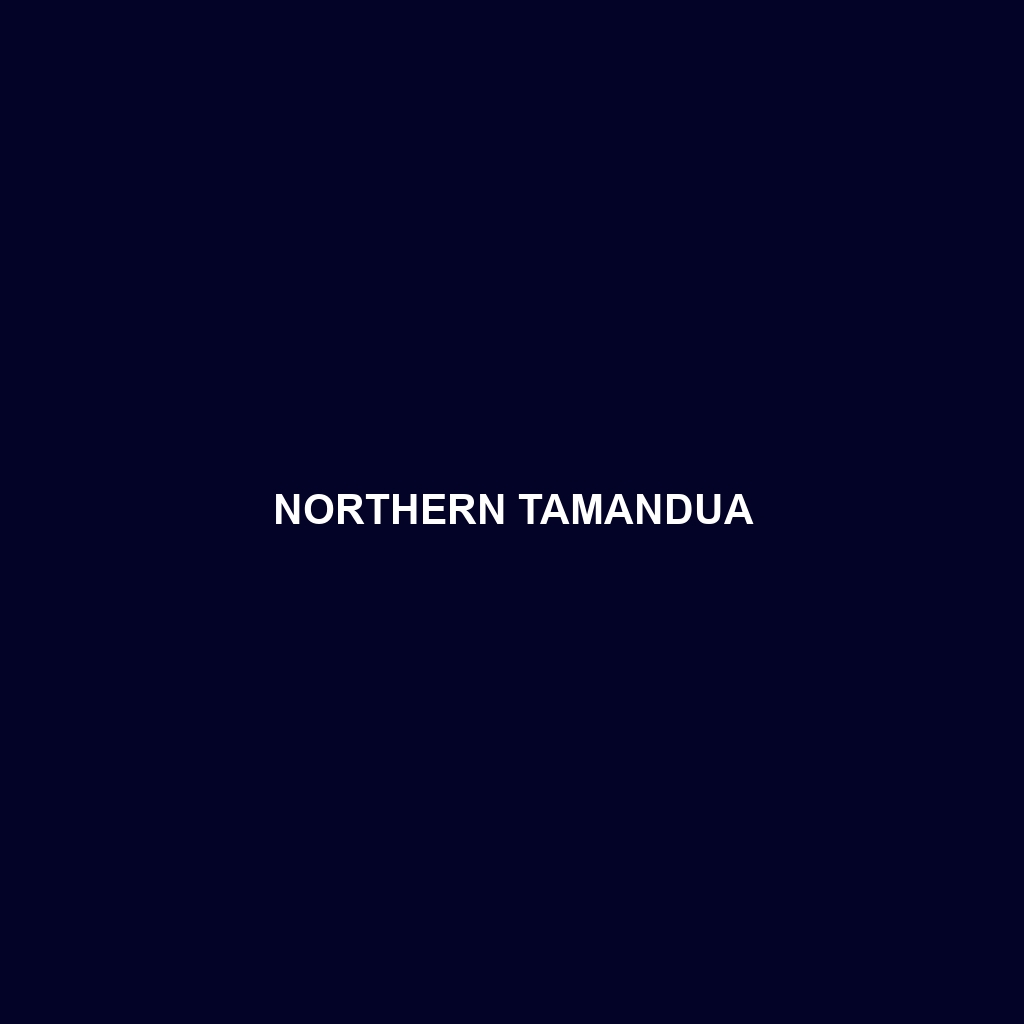Northern Tamandua (Tamandua mexicana)
The Northern Tamandua, also known as the Lesser Anteater, is a medium-sized mammal native to Central and South America. Known for its distinctive prehensile tail and specialized diet of ants and termites, this intriguing creature is equipped with various adaptations that make it a fascinating subject for nature enthusiasts and researchers alike.
Physical Characteristics
Size: Adult Northern Tamanduas typically measure between 47 to 77 cm (18.5 to 30.3 inches) in body length, with a tail length of an additional 40 to 67 cm (15.7 to 26.4 inches). They weigh between 3 to 5 kg (6.6 to 11 lbs).
Coloration: The fur of the Northern Tamandua is generally pale yellow or tan, with a distinctive black “vest” that covers the sides of its body, giving it a unique appearance. This coloration provides some degree of camouflage in its arboreal habitat.
Special Features: One of the most notable features of the Northern Tamandua is its long, curved claws, which it uses to break into ant and termite colonies. It also possesses a prehensile tail, aiding in its arboreal lifestyle by providing balance and grip as it navigates through the trees.
Behaviors
Social Interactions: Northern Tamanduas are generally solitary animals, coming together primarily during the mating season. They communicate through scent markings and vocalizations that include hisses and snorts.
Feeding Habits: Their diet consists mainly of ants and termites, although they occasionally consume small quantities of fruit and honey. They use their strong forelimbs and claws to tear open insect nests and their long, sticky tongues to capture their prey.
Ecological Roles: As insectivores, Northern Tamanduas play a vital role in controlling ant and termite populations, contributing to the ecological balance within their habitats.
Habitat
Range: The Northern Tamandua is found in a range of habitats from southern Mexico through Central America to the western parts of the Andes in South America.
Preferred Environments: They inhabit various environments including tropical and subtropical forests, savannas, and even mangrove swamps. They are highly adaptable but are most commonly found in areas with abundant ant and termite populations.
Adaptations: Their prehensile tails and strong forelimbs make them excellent climbers, allowing them to forage both in trees and on the ground. Their thick, coarse fur protects them from insect bites, while their elongated snouts and specialized tongues are perfect for their insectivorous diet.
Conservation Status
The Northern Tamandua is currently listed as Least Concern by the IUCN Red List. However, habitat destruction and fragmentation pose significant threats to their population. Conservation efforts are focused on habitat preservation and reducing human-wildlife conflicts.
Fascinating Fun Facts
Sensory Adaptations: Despite having poor vision, Northern Tamanduas have an excellent sense of smell, which they rely on to locate their insect prey.
Defensive Mechanisms: When threatened, they will rear up on their hind legs, using their powerful claws to defend themselves.
No Teeth: Like other anteaters, Northern Tamanduas lack teeth. Instead, they rely on their muscular stomachs to grind up their insect meals.
Prehensile Tail: They can grasp and manipulate objects with their tails, making them one of the few mammals with such an ability.
By understanding the Northern Tamandua’s unique characteristics and ecological importance, we can better appreciate the need to conserve their habitats and ensure their continued role in our world’s biodiversity.
